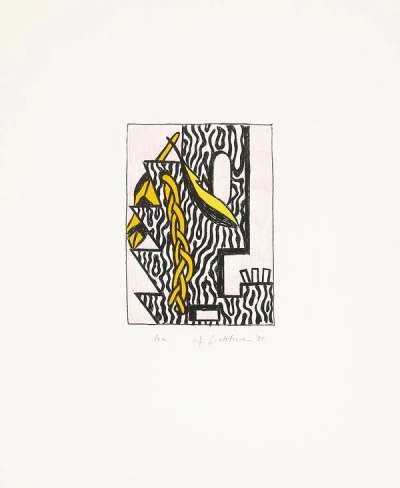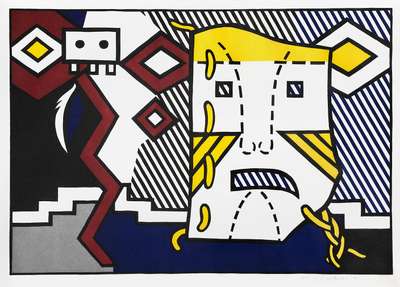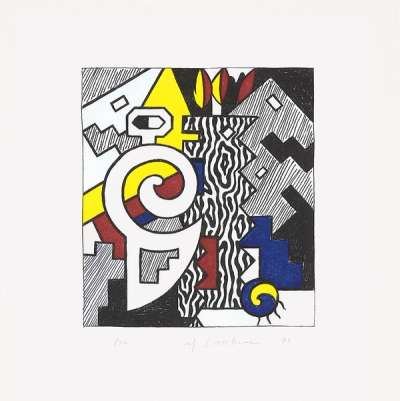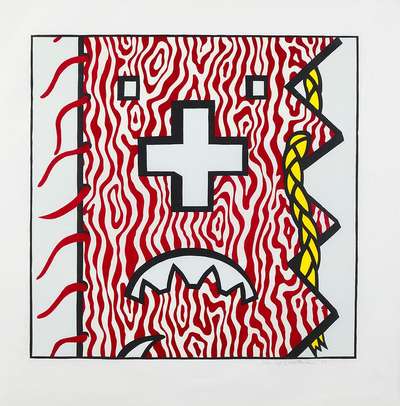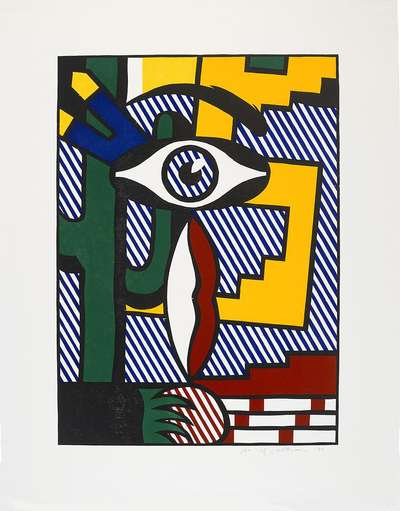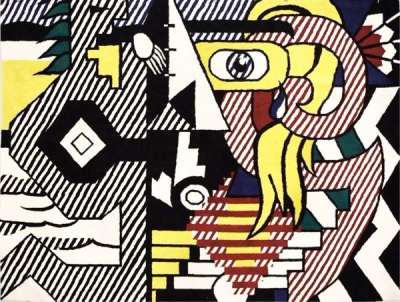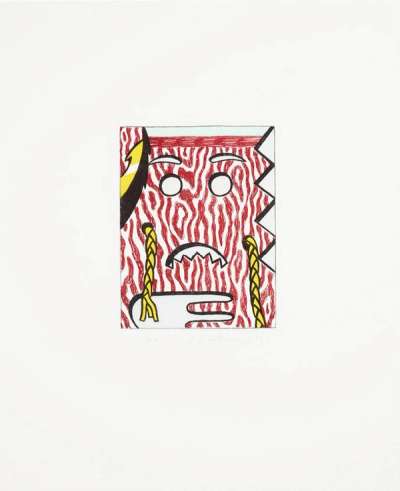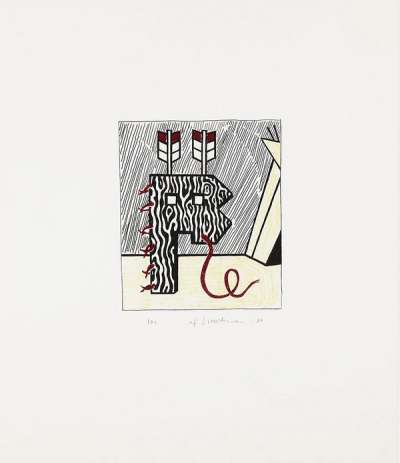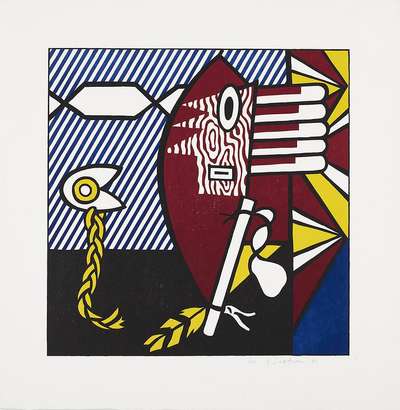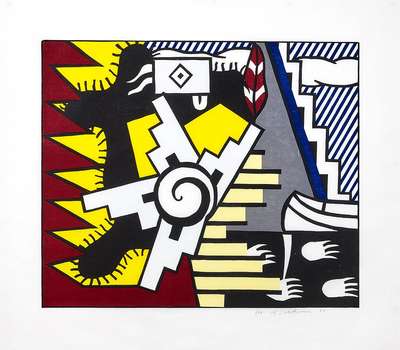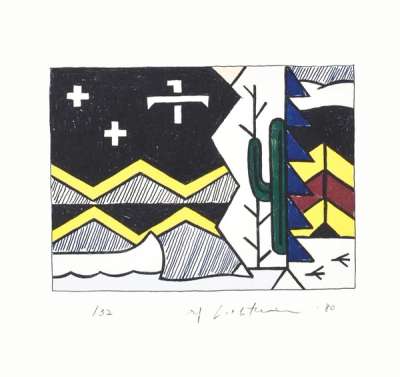
Two Figures With Teepee
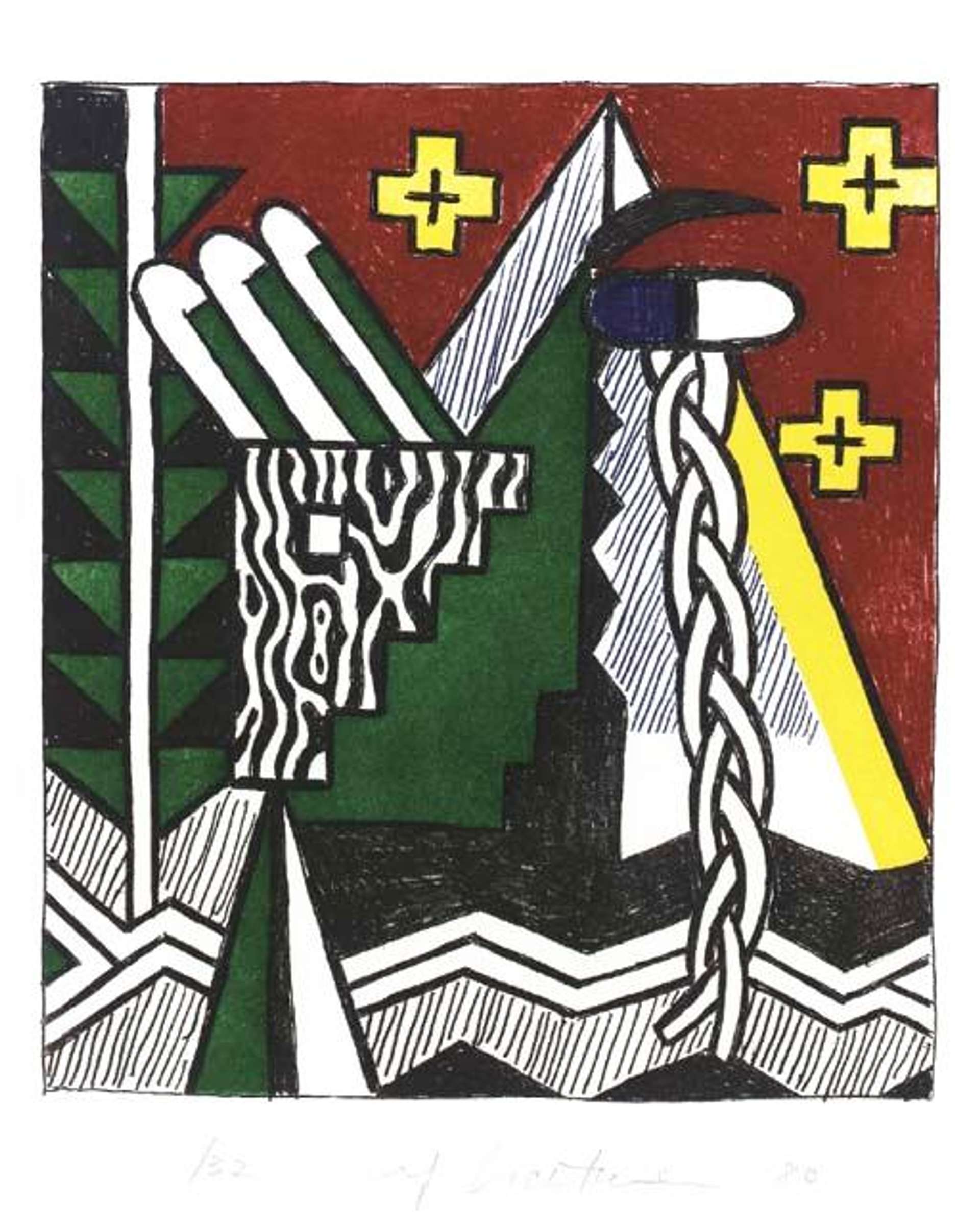
Two Figures With Teepee
Signed Print
Roy Lichtenstein
£5,500-£8,500Value
Indicator
$10,500-$17,000 Value Indicator
$9,500-$14,500 Value Indicator
¥50,000-¥80,000 Value Indicator
€6,500-€10,000 Value Indicator
$50,000-$80,000 Value Indicator
¥1,050,000-¥1,620,000 Value Indicator
$7,000-$11,000 Value Indicator
AAGR (5 years) This estimate blends recent public auction records with our own private sale data and network demand.
There aren't enough data points on this work for a comprehensive result. Please speak to a specialist by making an enquiry.
Medium: Intaglio
Edition size: 32
Year: 1980
Size: H 25cm x W 22cm
Signed: Yes
Format: Signed Print
MyPortfolio
Your collection tracked in real time.
Build your portfolio, manage valuations, view return against your collection and watch works you're looking for.
Track auction value trend
Auction Results
| Auction Date | Auction House | Artwork | Hammer Price | Return to Seller | Buyer Paid |
|---|---|---|---|---|---|
| April 2023 | Sotheby's New York - United States | Two Figures With Teepee - Signed Print | |||
| March 2023 | Sotheby's New York - United States | Two Figures With Teepee - Signed Print |
Meaning & Analysis
Roy Lichtenstein’s Two Figures With Teepee was constructed in 1980, as part of the artist’s American Indian Theme series. Two Figures With Teepee employs a particular etching technique referred to as intaglio. Rather than using wood as its base, the image here has been carefully engraved onto a metallic surface. Aquatint was applied in conjunction with the etching, producing areas of tone and texture rather than definite outlines.
The resulting imprint shows a green and blue striped triangular shape slightly off centre, a teepee as its title indicates, enclosed by floating yellow crosses symbolising the sun. The feathered part of an arrow, most commonly known as the fletching, covers the majority of the left of the work. There are numerous feathers on it, deep green like an upside down grove of pine trees, set against an intense crimson background.
The work conjoins the two most characteristic elements recurring in the American Indian Theme series; the block of ragged wood and the thick braided rope. The two figures stand facing each other, coasting on the rippled black and white patterns that adorn the bottom half of the work.
Two Figures With Teepee maintains a balance between static and active with the help of its chosen visual components.It is also a confrontation of the most familiar objects of Indian symbolic ornamentation and heritage.
